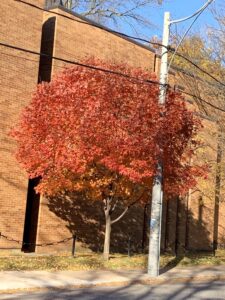Canada’s Fifth Largest Export

When my mother returned to Manila from her visit to Toronto in the early 70s, she was asked of her impressions about the city, to which she gave the following observations: it is too cold and the city is a forest. My mom is gone now yet I think of her as I write this piece. Like her, I’m an urbanite. Born and raised in Manila where trees were a rarity when I was living there, I can only remember one big tree near our place – an Acacia tree. It was so old that people used it as a landmark when giving directions.Wood is the 5th largest export of my adopted country. Harvested in British Columbia, it became a sticky issue last year when NAFTA (North American Free Trade Agreement) was renegotiated among the US, Mexico and Canada. NAFTA then became USMCA which stands for United States-Mexico-Canada Agreement. In an article posted on September 2nd, 2020 by Globalnews.ca, Prime Minister Trudeau vowed to keep fighting against the unceasing tariffs on soft wood lumber imposed by the US. He pointed out that construction will be vital in the two countries after the pandemic, especially in the US where the demand for lumber outweighs the domestic supply. January 2021 saw a surprising increase of 8.1% in Canadian exports, wood among them, according to Julie Gordon in her Reuters article “Spike in Canada exports to US leads to surprise January trade surplus”. Daniel Workman of WorldExports.com also reported that Canada is one of the biggest exporters of sawn wood.
In May, 2021, a photo of a massive old growth tree hitched to a flatbed truck went viral online and sparked a negative conversation about logging for old growth trees. In BC (British Columbia), anything older than 250 years on the coast and 140 in the Interior is categorized as an old growth tree. When these trees get cut down, a huge amount of carbon gets lifted in the air, “the life of up to 1,800-year-old air filter and heart of a complex ecosystem snuffed out”, wrote Stefan Labbe, in Pique Newsmagazine of May 22, 2021. Globally, forests scrub a third of our carbon dioxide emissions, with old growth trees maintaining forest diversity. Forest ecologist Rachel Holt iterates, “We have forest stands in BC that hold some of the highest sources of carbon of any forest.”.
Northern Ontario Business Derek Neighbor, in his article of December 29, 2020, opined how Canadian forestry prove to be vital in fighting COVID 19 after WHO declared the pandemic in March 2020. Declared an essential service, forestry provides lumber and wood products for construction, pulp for medical masks, hospital gowns, toilet paper, and sanitary wipes. The pandemic is still on and we remain vigilant against new strains; hence, we still wear masks when physical distancing is impossible and wipe our hands with sanitary wipes when faucets are nowhere near us.
Trees are vital to our ecosystems. Old growth trees support an underground network of fungi, guiding nutrients and water between species. In my elementary years, I learned Joyce Kilmer’s poem “Trees”. My teacher told the class to memorize it. The only way I could do this was to sing the song version. It starts with, “I think that I shall never see, a poem as lovely as a tree …. “. When I look at an old tree, its twigs and branches bent from the assault of harsh winds, I think of the old Acacia tree in my old neighbourhood which I wasn’t able visit during last year’s trip to the Philippines because of the Enhanced Community Quarantine at the time. I’d like to think it’s still there, serving as a meeting spot for people or as a landmark for directions. Most of all, I’d like to think that it continues to provide shade from the harsh heat of the day.
In the pic by Ricky Castellvi, young maple tree changing colours in Fall


